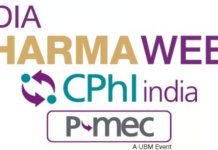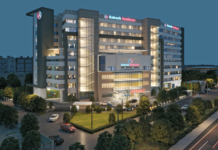New Delhi, July 10, 2019: The Hospital sector is seeing better days ahead after more than two years of subdued performance. The tough days wer triggered primarily on account of several regulatory measures, including the cap on prices of stents by National Pharmaceutical Pricing Authority (NPPA), cap on prices of knee implants by the NPPA, adverse impact of rollout of Goods and Services Tax (GST) on profitability, and strict regulatory actions taken by multiple states, including putting restrictions on procedure rates, levying penalties and placing operational limitations on erring hospitals. The performance was also impacted due to the start-up cost of new hospitals owing to significant capex done by the entities in the sector and the long gestation period required for the new facilities to ramp up.
Mr. Kapil Banga, Assistant Vice President – Corporate Ratings, ICRA, said: “In line with our expectations, the performance of the players in the sector has likely bottomed out, after struggling for more than two years. Nonetheless, the regulatory environment continues to be the overarching challenge for the hospital sector; the wide-ranging regulatory restrictions from multiple authorities had supressed their margins.”
In terms of performance analysis, in Q4 FY2019, the aggregate revenues of companies in ICRA’s sample set[1] grew by a healthy ~14% on a Y-o-Y basis, from Rs. 3551 crore in Q4 FY2018 to Rs. 4035 crore in Q4 FY2019. The EBITDA grew by a robust ~33%, from Rs. 420 crore to Rs. 521 crore, and the EBITDA margin improved substantially from 11.8% to 13.9% during the same period on account of high operating leverage of the business. In comparison, the aggregate revenues of the sample set had grown by 6% in Q4 FY2018 and the EBITDA had dropped by 6%. The revenue growth in Q4 FY2019 was driven by an increase in occupancy as well as the average revenue per occupied bed (ARPOB). The revenues were higher for all six entities covered in the sample and the EBITDA was higher for five out of the six entities. The aggregate number of operational beds increased from 21902 as on March 31, 2018 to 22324 as on March 31, 2019 – growth of only ~2%, reflecting limited bed additions during this period. The occupancy of the sample set improved significantly, from 61.9% in Q4 FY2018 to 64.0% in Q4 FY2019, reflecting better asset utilisation. The ARPOB of the sample set grew by a strong 9.5% in Q4 FY2019 on a Y-o-Y basis, much higher than the five-year compounded annual growth rate (CAGR) of ~6.8%. In comparison, ARPOB had grown at a muted 3% in FY2018 and at 3.6% in 9M FY2019.
In FY2019, the revenues of the sample set grew by 10%, to Rs. 15891 crore compared to revenues of Rs. 14475 crore in FY2018. The EBITDA of the sample set grew by 6%, from Rs. 2009 crore to Rs. 1891 crore during this period. FY2018 had seen the first fall in EBITDA of the sample set in more than five years, however it increased thereafter, reflecting the bottoming out of the performance of the sector, post multiple headwinds.
Corporate Comm India(CCI Newswire)
























